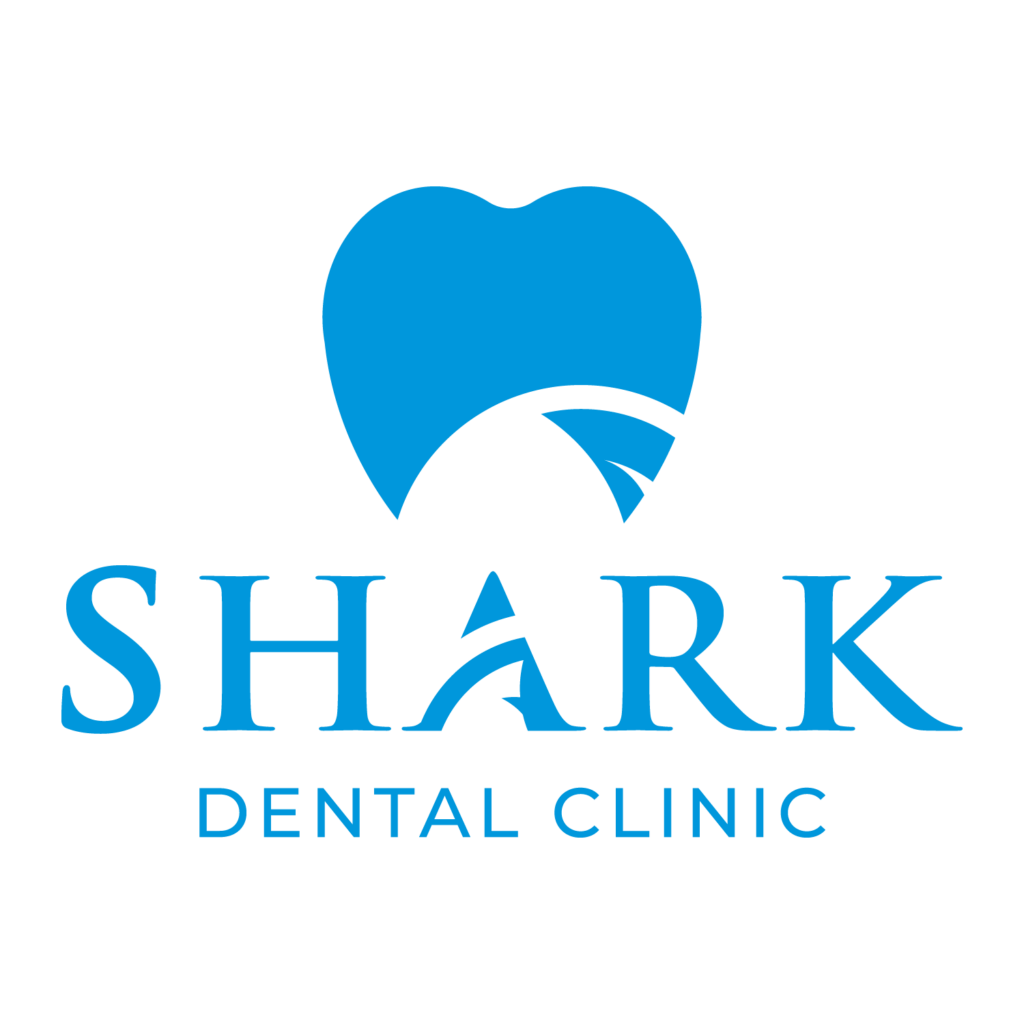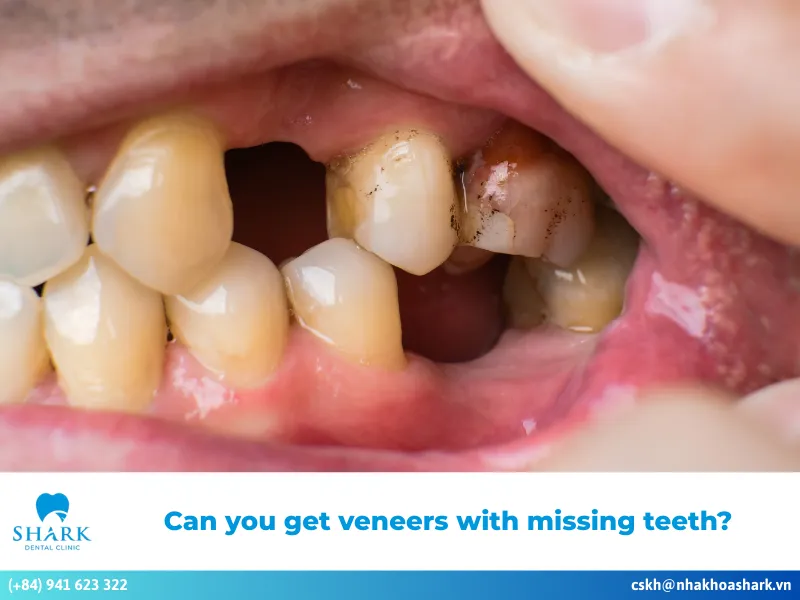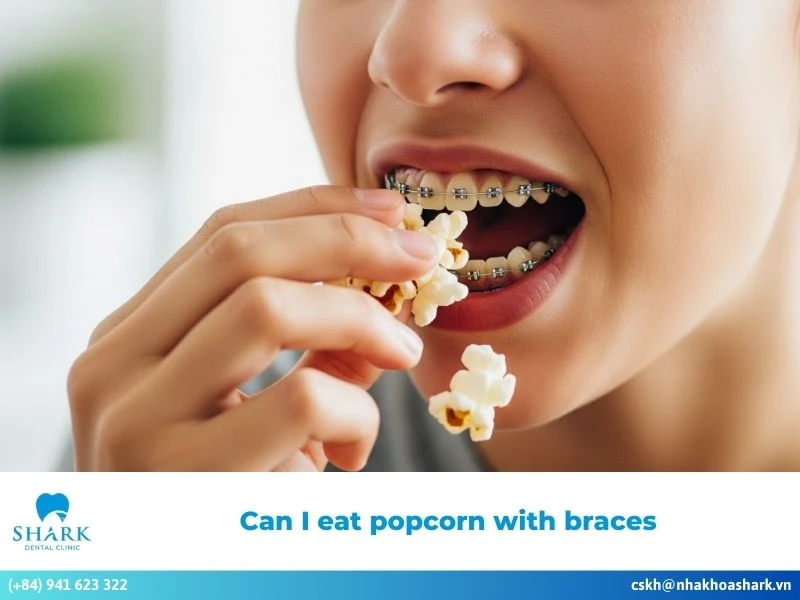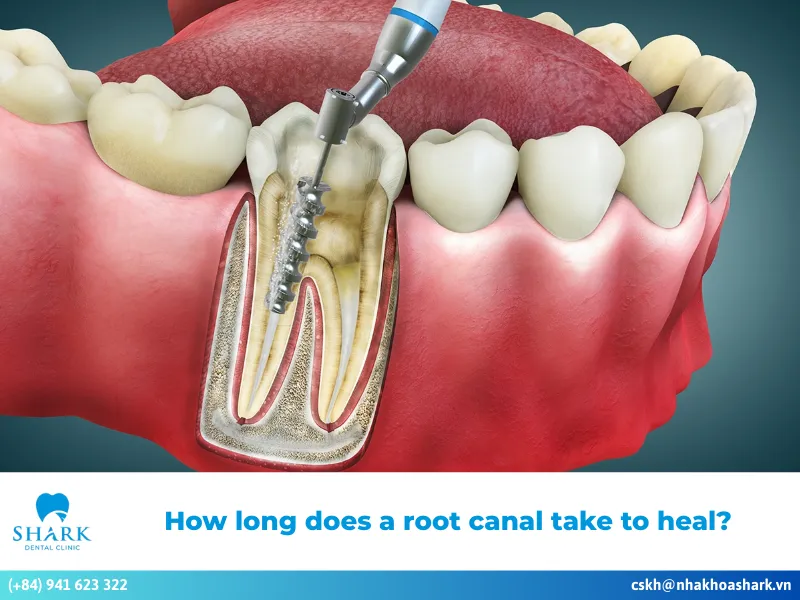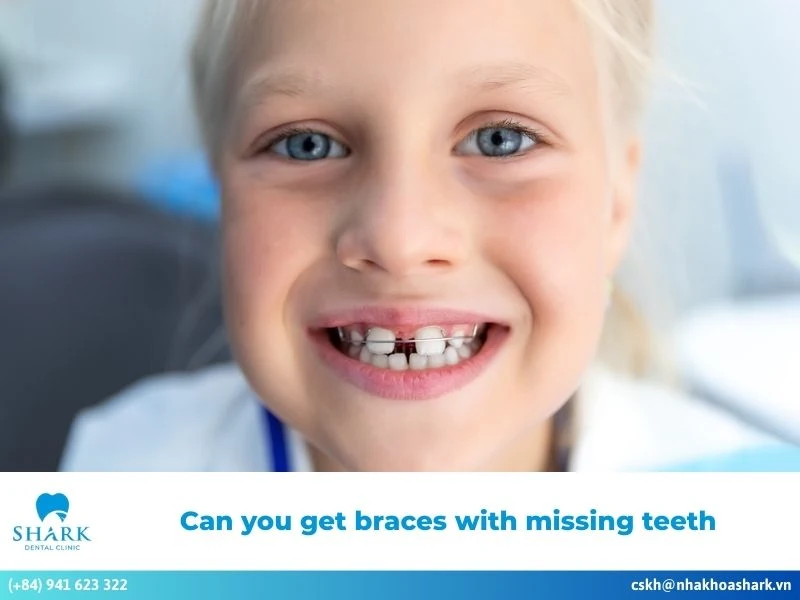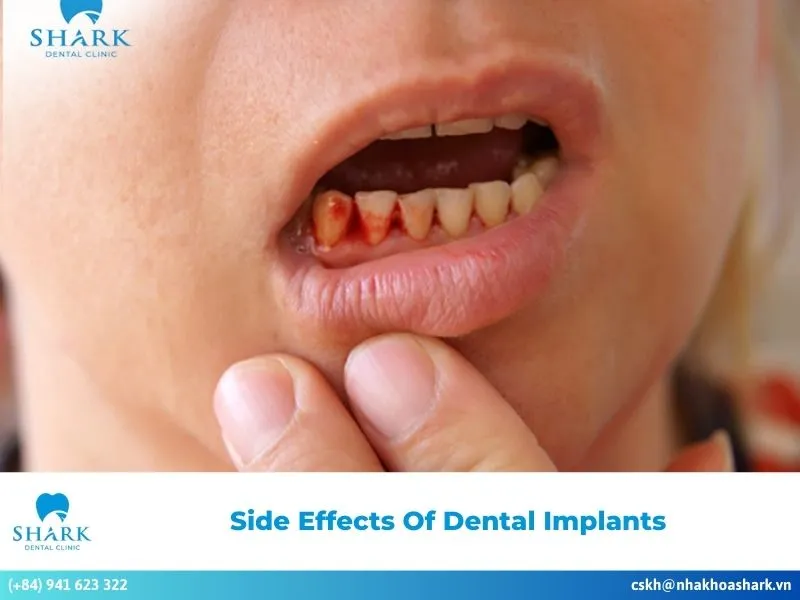Crooked teeth not only make your smile less attractive but also hinder daily oral hygiene and eating. So, can you get veneers with crooked teeth? What are the pros and cons of this method? Let’s explore the detailed answers with Shark Dental Clinic in the article below!
Can you get veneers with crooked teeth?
In cases of mild crooked teeth, with a misalignment of no more than 2–3 mm, a stable bite, and normal chewing function, veneers can be applied. Veneers are thin shells bonded directly to the front surface of the teeth to enhance aesthetics, giving you a whiter, more even, and more confident smile.
However, in cases of moderate to severe crooked teeth, veneers cannot be applied immediately, orthodontic treatment is required beforehand. According to experts, when the tooth surfaces are uneven, the gaps between teeth are too wide, or the contact points between adjacent teeth are irregular, veneers cannot fit snugly onto the teeth.
Orthodontic treatment before getting veneers serves as the foundation for correcting crooked teeth. Once the teeth are properly aligned on the dental arch, veneers can deliver the best results, ensuring the durability of the shells while minimizing the risk of gaps and tooth sensitivity in the future.
In summary, if you have crooked teeth, it is best to have a thorough examination at a reputable dental clinic. There, dentists will assess your oral condition, determine the degree of misalignment, and recommend a suitable restoration method to ensure the safety of your oral health.
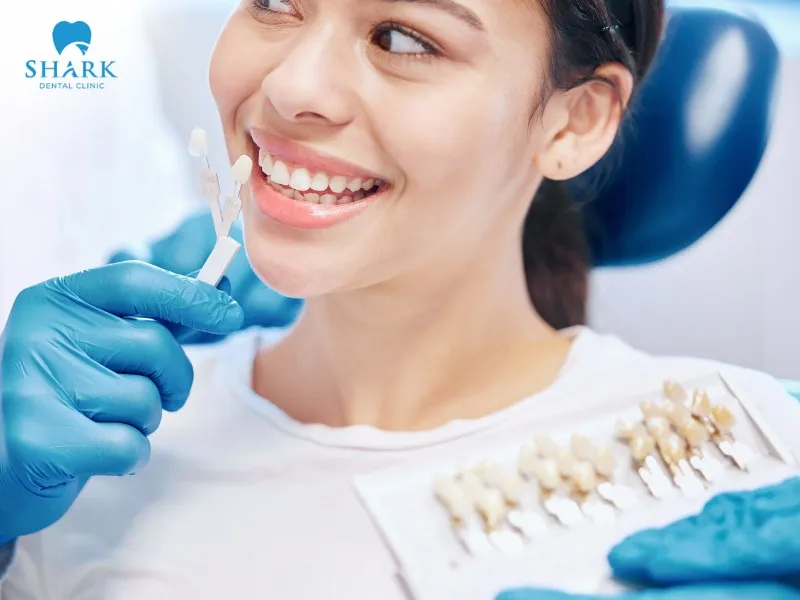
>>> See more: Do you have to shave your teeth for veneers?
Pros and cons of veneers for crooked teeth
Crooked teeth can be improved in both aesthetics and chewing function by combining orthodontic treatment with veneers. Below are some notable pros and cons of getting veneers for crooked teeth for your reference:
Pros
Advantages of using veneers for crooked teeth:
- High aesthetics: Applying veneers to crooked teeth after orthodontic treatment helps correct misalignment issues. Veneers match the color and size of natural teeth, giving your smile a natural look that harmonizes with your facial features.
- Minimally invasive to natural teeth: The veneer application process requires little to no tooth filing and if filing is needed, only a very small portion of the natural tooth is reduced. This helps preserve the tooth structure, avoids dentin exposure, and greatly minimizes post-restoration sensitivity.
- Time saving: The veneer application process is quick, typically requiring only 2–3 appointments to complete the treatment, significantly saving time compared to orthodontic braces.
- High durability: With proper eating habits and oral care after getting veneers, their lifespan can reach 10–15 years, or even longer.
- Easy to clean: Porcelain veneers have smooth, even, and well-fitted surfaces, making daily cleaning easier and helping prevent tooth decay and gum inflammation.
Cons
In addition to the above advantages, applying veneers to crooked teeth also has some drawbacks, such as:
- Not suitable for severely crooked teeth: Veneers are only appropriate for mild cases of misalignment. If the teeth are significantly crooked, protruded, or severely underbited, orthodontic treatment is necessary.
- High cost: For severely crooked teeth, combining orthodontic treatment with veneers is required. In this case, the restoration cost will be quite high, significantly more expensive than dental crowns.
- Requires high technical skill: The veneer bonding method requires the dentist to be highly skilled, performing the bonding procedure carefully and meticulously to ensure the veneers fit snugly against the natural teeth without feeling bulky or peeling/detaching.
- Proper oral care required: Veneers are relatively thin and can crack or chip under excessive force. Therefore, it is essential to strictly follow your dentist’s oral care instructions after the restoration.
In summary, the veneer method for crooked teeth has certain advantages and disadvantages. It is advisable to consult a qualified dentist for thorough and specific advice on your dental condition, helping you find the most suitable orthodontic solution.
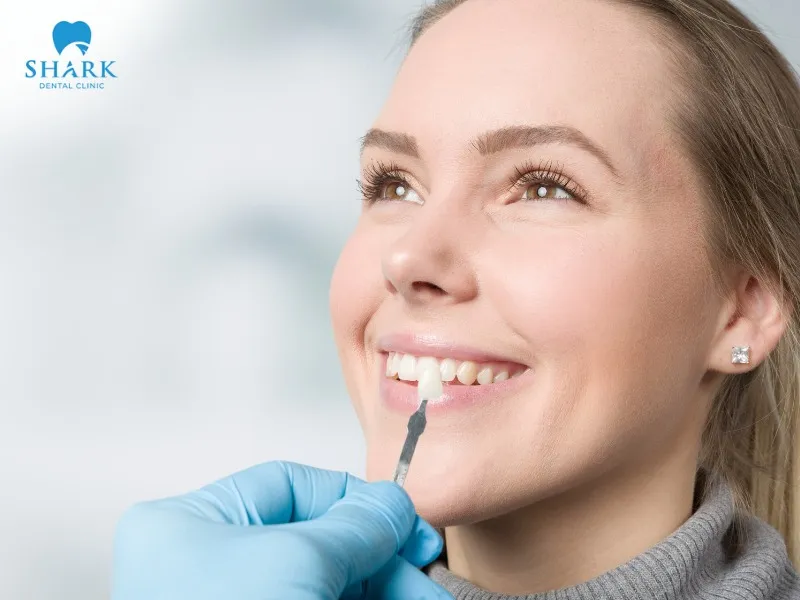
Crooked teeth veneers before and after
Before and after getting veneers for crooked teeth, you will notice a significant difference:
Before veneers
Before applying veneers, the dentist will conduct a comprehensive oral health examination. Using X-ray results and clinical assessment, the dentist will determine the degree of tooth misalignment, check the enamel and bite, as well as identify any common dental issues.
In cases of mildly crooked teeth, patients may be advised to get veneers or dental crowns, depending on their needs and actual condition. For severely crooked teeth, orthodontic treatment is required first to make improvements, followed by veneer application for restoration.
Veneers are crafted using advanced fabrication technology in a sterile laboratory. They closely match the size and color of natural teeth, ensuring a precise fit and a naturally aesthetic appearance after restoration.
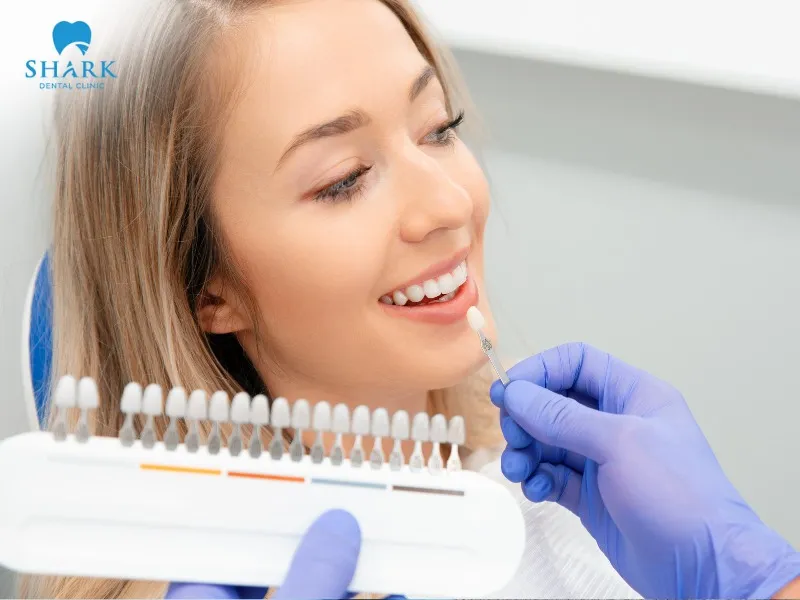
After veneers
After the dentist secures the veneers onto the natural teeth, the patient’s bite will be thoroughly checked. At the same time, the dentist will adjust the veneer surfaces to ensure they do not cause any bulkiness or discomfort during eating or daily activities.
After getting veneers, patients should follow the dentist’s instructions for daily oral care and hygiene. It is recommended to use a soft-bristled toothbrush, specialized dental floss, and mouthwash to keep the teeth clean. In addition, you should limit consuming overly spicy, hot, or cold foods, carbonated drinks, and foods or beverages that can cause staining.
One of the most important things after getting veneers which you should never skip is follow up visits You should return for check ups as scheduled by your dentist or every 3 to 6 months to assess the condition of the veneers and address any issues if they arise
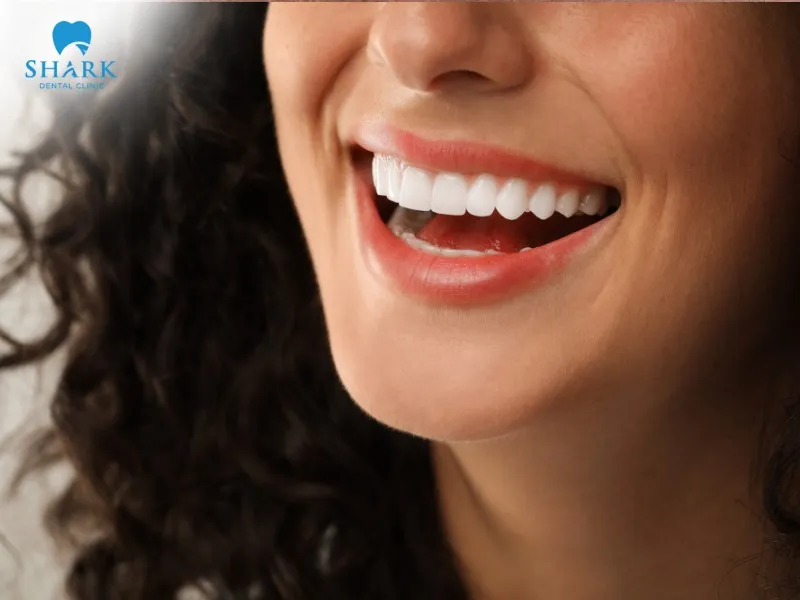
Can you get veneers with crooked teeth has been thoroughly explained by Shark Dental Clinic in the article above. When applied in the right cases, veneers can deliver outstanding aesthetic results while also improving chewing function.
Hopefully, the information in this article will serve as a useful resource to help you make the right decision for your dental restoration, quickly address your current oral issues, and achieve a confident smile with strong, healthy teeth.
>>> See more: Dental veneer price in Vietnam


